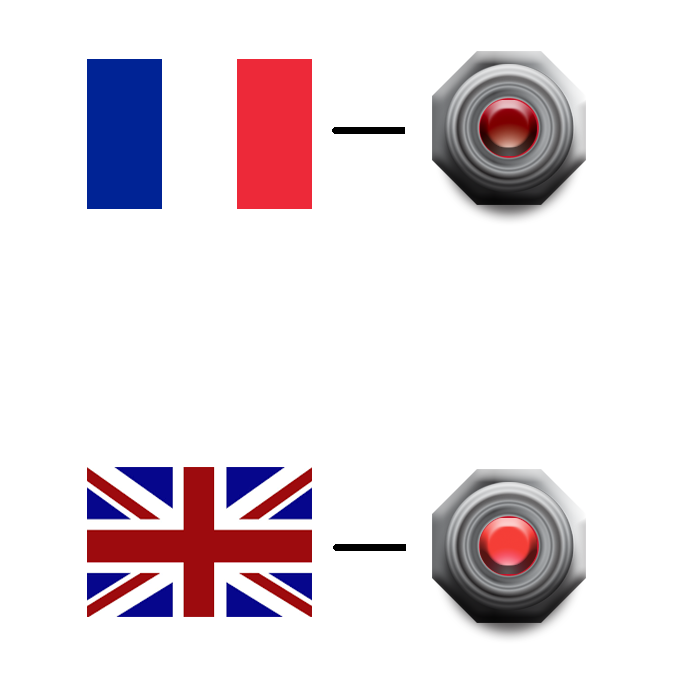Generalities [ contact ]
Electronic card description
The electronics will be based on an Atmel ATTINY 4313 microcontroller, identical to the 2313, but with twice as much Flash (4 kb). The 2313 was a bit tight to implement the program with all the desired functionality.This will communicate in serial / TTL to the PC, via a commercial USB / TTL UART based on FT232, natively supported by Windows.
The microcontroller will have two PWM outputs, one for X and one for Y, to an H-bridge L293, actually not used in H, but in four separate amps, one per coil. The coils having a nominal voltage of 2.5 volts, the bridge accepting only 4.5 to 36 volts for its power part, the coils were put in series with drop resistors, and the whole supplied with 6 volts adjustable given by a 317. Smoothing inductors have been provided. Since these have internal resistance, this will minimize the value of the falling resistance.
Indeed, two possibilities were open to me:
* Windings in series head to tail. Advantage: no falling resistors (5 V). Double mirror stroke. Disadvantage: the current must be reversed to reverse the direction of deflection, which poses hysteresis problems.
* Separate windings. Advantages: the current is always positive or zero. Disadvantage: falling resistances. Mirror stroke halved.
It is the latter solution that was adopted. Pay attention to the polarity of the coils: to keep the mirror support in contact with its ball joint, they must pull and not push.
Operation of Electronics
For each guidance command received on an axis, the value of the duty cycle is incremented or decremented by the chosen step. The comparison value in OCR1x is from 0 to 1023. The step (increment) is from 1 to 255.Duty cycle at 50%: the average current in the coils is half of Imax: the mirror is in the center, at 100%, one coil is at Imax, the other at 0, at 0% it is the reverse.
The coils are therefore controlled in phase opposition. In reality, it is the same signal which will be applied to the input of the amps, but one coil will be at Vcc, the other at ground, the phase shift being done by itself.
On receipt of a CENTER command, OCR1A and 1B are reset to the value chosen for the center (512 + or - the center offset).
The logic part will be powered either by an external 5 Volts source, or by the USB bus (selection by jumper). The power will be supplied with 12 volts.
Site Map | Legal Notice | Contact | Site optimized fo FireFox (?) | Cookies Free (*)
Copyright © 2012 - 2024 ADG. Developpement, production & hosting by ADG.
Original theme by ADG.
V 1.6 [ 07-06-2021 ]


